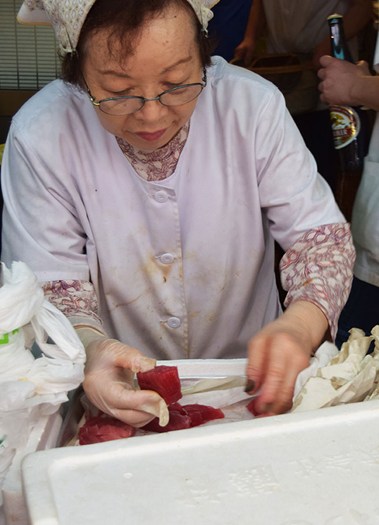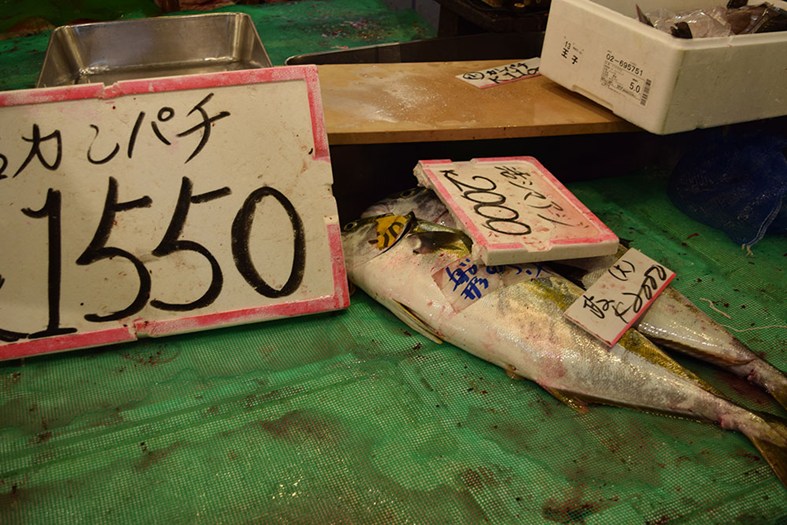TOKYO - Total strangers, speaking every language imaginable, huddle beneath tarps slung between the small sushi restaurants opposite the Tsukiji Fish Market trying to avoid the relentless spring shower.
The tourists are packed like sardines in the narrow passages that separate the restaurants, but no one appears willing to leave.
“They line up around 6 a.m. every day and they wait as long as two hours to get into the restaurants,” a seaweed salesman tells me.


Above: Customers line up early and wait a long time before entering the cramped sushi restaurants at Tokyo's fish market.
The queue waiting to enter the narrow restaurants is orderly. No one pushes or shoves. The lucky ones smile back at the crowd as they enter the premises.
Always rated among the Top 5 tourist attractions in Japan’s capital, the Tsukiji Fish Market is one of the most fascinating places to visit — it’s a beehive of activity from the time it opens until it closes at midday.
“The market opens around 4 a.m. and that’s when the big tuna get auctioned off,” the seaweed vendor tells me as he hands me a salted sample of his product to taste. Yum!
“After the auction, local fishmongers and chefs come and get their catch of the day. The tourists who arrive early (registration starts at 5 a.m.) always come over here (to the restaurants) afterwards.”


Above: Variety and freshness is what the old Tokyo fish market was all about.
There’s no fresher fish on the planet then what’s served in these tiny restaurants. Once inside, the patrons are treated to the freshest uni (sea urchin), toro (the fattest part of the tuna, and the best part!), hamachi (yellow tail tuna) and an assortment of other seafood goodies plucked from the oceans just a few hours earlier. The charge: about $40 U.S. and worth every penny as far as I, and every other uni lover out there is concerned.



Above: Fish that was swimming in the sea just a few hours earlier are displayed at the old Tokyo fish market.
Access to the auction is restricted to early risers — an incident a few years ago, when a tourist was struck by a forklift truck, prompted market officials to create a viewer’s gallery (behind glass) so the fishermen can go about their business without being interrupted. You must line up around 5 a.m. to get a ticket and only about 40 people are admitted each day.
The restaurants — Diwa is my favourite — hold between 10 and 15 people and they’re always crowded.
“This is my 15th visit to Tokyo and my 16th visit to this market; I came here twice on one of my visits,” a charming Australian tells me.
One visit to the Tsukiji Fish Market gets you hooked for life.
About the Author
As President and CEO of Tour East Group, Annie has revolutionized Tour East's approach to business, investing in new technology that has allowed the company to expand its footprint, not just in Canada, but globally. Annie's vision resulted in Tour East Group becoming one of the first Canadian travel companies to expand into the travel fulfillment services sector.